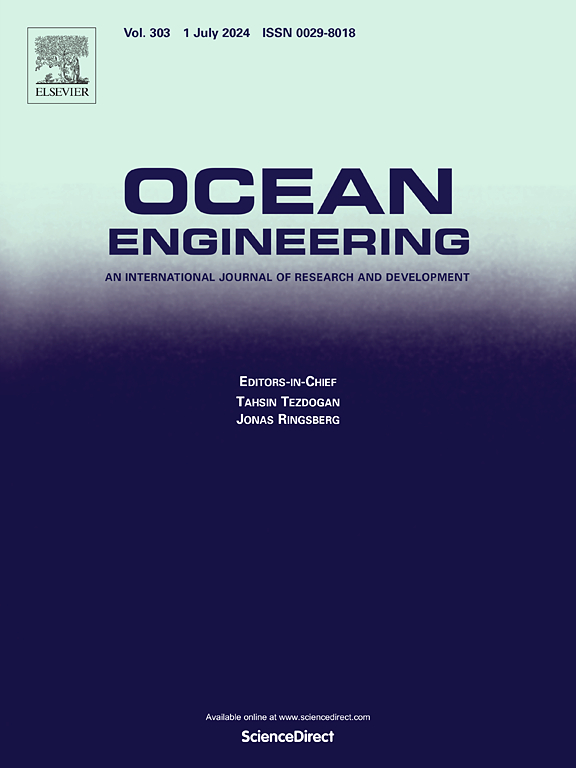Performance enhancement of floating raft system by exploiting geometric nonlinearity and motion constraint in vibration isolators
IF 4.6
2区 工程技术
Q1 ENGINEERING, CIVIL
引用次数: 0
Abstract
This paper proposes a nonlinear vibration isolator with hybrid passive elements to mitigate the vibration transmission in floating raft systems. The proposed isolator employs a combination of a geometrically nonlinear linkage mechanism, an inerter, and a motion constraint. Analytical and numerical methods are applied to determine the responses. Given the presence of multiple transmission paths and excitations, power flow indices serve as primary metrics for performance assessment. The results show that the constraint can prevent the folding problem of the linkage mechanism. This, in turn, provides 1) flexibility in the parameter design to achieve quasi-zero dynamic stiffness and 2) protection for geometrically nonlinear systems under extreme operating conditions. The proposed element introduces an anti-peak into the response and power transmission curves, effectively shifting the resonance peaks to lower frequencies. The desired low-frequency isolation performance can be achieved through a coordinated parameter design. This would provide an ultralow response as well as force and energy transmission near the original resonant peaks of the linear system. Furthermore, the proposed design exhibits enhanced performance across diverse operational conditions including multiple frequency excitations and varying mass ratios and forcing amplitudes. These observations demonstrate the potential of utilizing hybrid nonlinear elements in ocean engineering applications.
利用隔振器的几何非线性和运动约束增强浮筏系统的性能
本文提出了一种带有混合无源元件的非线性隔振器,以减轻浮筏系统中的振动传播。所提议的隔振器采用了几何非线性连杆机构、阻尼器和运动约束的组合。分析和数值方法用于确定响应。鉴于存在多个传输路径和激励,功率流指数成为性能评估的主要指标。结果表明,约束可以防止连杆机构的折叠问题。这反过来又提供了:1)参数设计的灵活性,以实现准零动态刚度;2)在极端运行条件下保护几何非线性系统。拟议的元件在响应和功率传输曲线中引入了反峰值,有效地将共振峰值转移到较低频率。通过协调参数设计,可实现所需的低频隔离性能。这将提供超低响应以及线性系统原始共振峰附近的力和能量传输。此外,拟议的设计在不同的运行条件下(包括多频率激励、不同的质量比和激励振幅)都能表现出更强的性能。这些观察结果证明了在海洋工程应用中使用混合非线性元件的潜力。
本文章由计算机程序翻译,如有差异,请以英文原文为准。
求助全文
约1分钟内获得全文
求助全文
来源期刊

Ocean Engineering
工程技术-工程:大洋
CiteScore
7.30
自引率
34.00%
发文量
2379
审稿时长
8.1 months
期刊介绍:
Ocean Engineering provides a medium for the publication of original research and development work in the field of ocean engineering. Ocean Engineering seeks papers in the following topics.
 求助内容:
求助内容: 应助结果提醒方式:
应助结果提醒方式:


